in Planted Aquarium
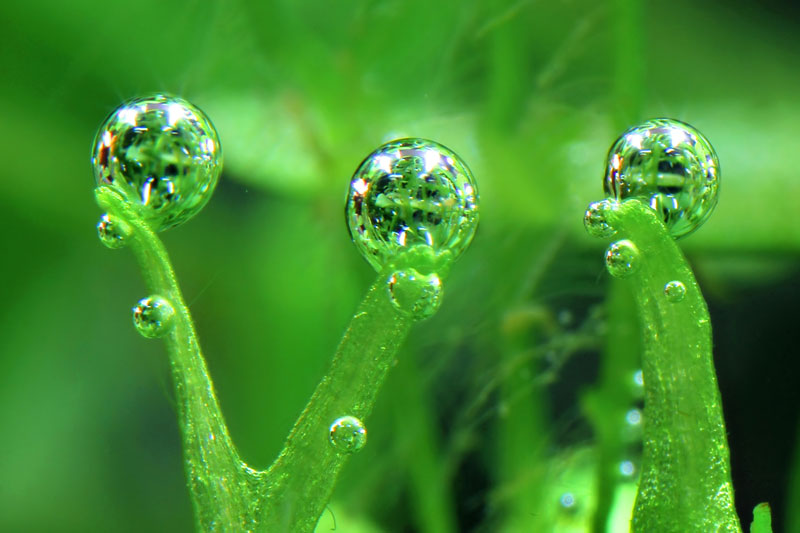
Carbon dioxide for a stable aquarium ecosystem
Besides light, aquatic plants need nutrients: nitrogen, potassium, phosphate, trace elements and — very importantly — carbon. Without carbon, plants cannot generate energy.
During photo-synthesis, which is the most important step in planet Earth‘s metabolism, the plants use sunlight to turn carbon dioxide and water into sugar as a form of storing energy. For doing so, aquatic plants fully rely on the CO2 dissolved in the water.
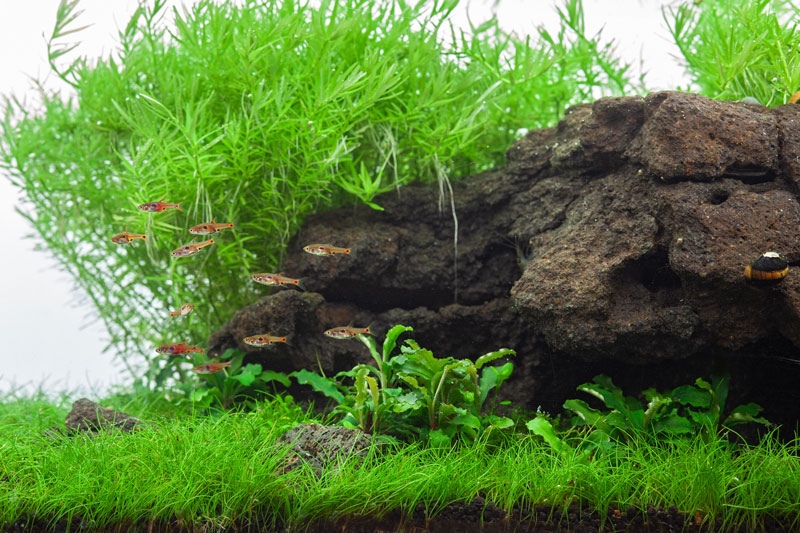
In natural waters, the carbon dioxide content is usually very high. In the closed system of an aquarium, CO2 is often deficient. A clear sign for this are weakly-growing plants.
Strong, vigorous, intensely colored plants do not only look nice, they also help keep the algae in check.
Well-growing plants use up the nutrients faster than the algae and take away their biological niche. Aquarium animals and the filter bacteria benefit from the oxygen the plants produce when photosynthesizing, and with their roots, healthy plants create a special microclimate in the substrate, preventing oxygen-deprived rotting zones from forming in the first place.
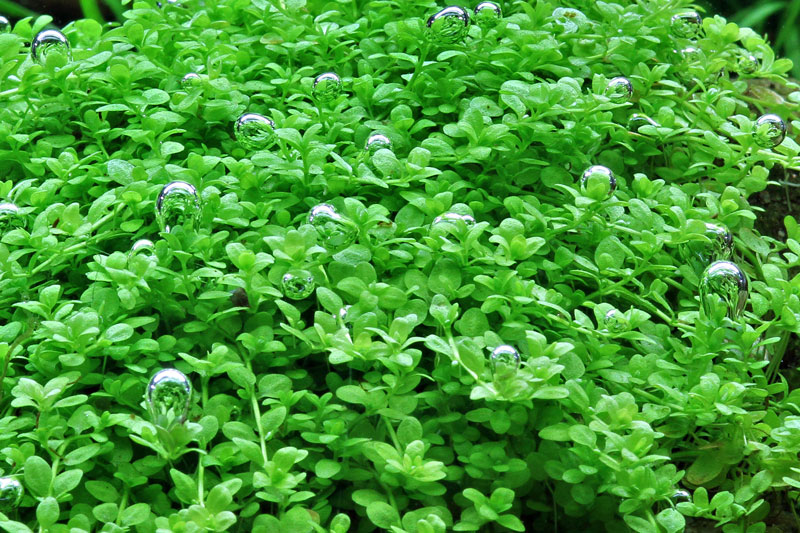
A well-running tank can be easily identified as the plants inside grow healthily — when the plants do well, the entire ecosystem does well. The incredibly attractive impression of a stable, healthy aquarium is hard to achieve without the addition of CO2.
Carbon is one of the most important nutrients for our aquatic plants. Without carbon, they cannot photosynthe- size to generate energy. During this most important step in planet Earth‘s metabolism, carbon dioxide and water are turned into sugar as a form of storing energy. This is done with the help of sunlight.
Terrestrial plants do not have problems taking up sufficient amounts of CO2, as the CO2 concentration in the air is sufficiently high.
Aquatic plants, however, need to fully rely on the CO2 dissolved in the water, which is practically almost always deficient in artificial systems. Carbon is the most important building block for the tissue of terrestrial as well as aquatic plants.
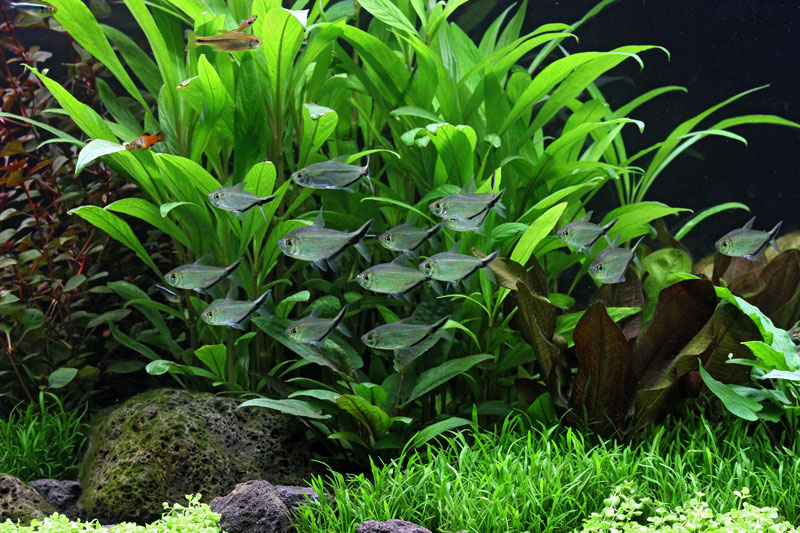
For a well-functioning ecosystem inside an aquarium with healthy, beautiful plants, fish and invertebrates, a good carbon supply is crucial.
Light, CO2 and nutrients need to be present in the right ratio, though. If you only add more of one of these elements, you will most probably not get good results but merely cause an increase the population of pest algae.
If we add a CO2 injection system to our aquarium setup we need to make sure that the plants get sufficient light and that the necessary nutrients and trace elements are added to the substrate and the water.
How much CO2 is necessary?
It‘s all in the dosage: Too high a CO2 content may cause the pH to drop too much. Moreover, plants can only use CO2 for photosynthesis when there is light, which may have unpleasant consequences for the aquarium animals especially in the morning hours. Their breathing is inhibited by a high CO2 content of the water, they cannot get rid of the CO2 in their blood any more — in extreme cases this may even lead to suffocation.
For this reason we adamantly warn of lowering the pH with the addition of CO2, which is unfortunately still recommended quite frequently.
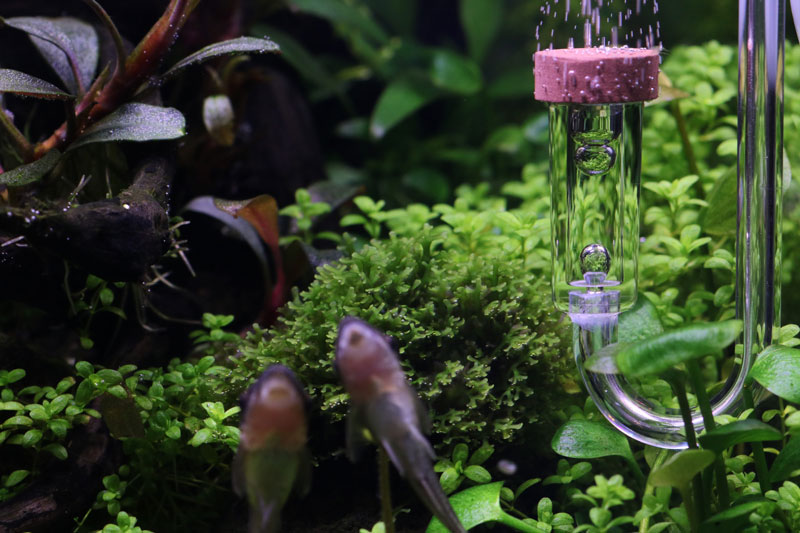
CO2 supply - How to bring carbon dioxide into an aquarium
Besides bio CO2: there are CO2 injection systems with disposable and recyclable pressurized gas cylinders. In these cylinders, liquid CO2 is kept under a relatively high pressure. For this reason, you need a pressure reducer for dosing the carbon dioxide.
Always keep pressurized gas cylinders in an upright position. The CO2 they contain is liquid in the lower part of the cylinder and gaseous in the upper part. As the CO2 evaporates, temperatures fall considerably due to evaporative heat loss.
If the cylinder lies on its side the valves may freeze, which would lead to an uncontrollable CO2 escape.
The pressure reducer is decisive for the reliability and the consistency of the CO2 system and how easily you can adjust the CO2 dosage — the so-called bubble count. The pressure reducer needs to lower the pressure inside the bottle, which is around 60 bar, in a way that allows us to supply 5-60 bubbles per minute to our aquarium.
The pressure reducer is connected to a special CO2-tight hose. Too much CO2 would diffuse through the walls of standard silicone hoses and PVC air hoses, they are not suitable for this purpose! Shortly after the pressure reducer you insert a special CO2 check valve into the hose to prevent aquarium water from entering the pressure reducer or the CO2 cylinder.
A good guideline is 20-30 mg CO2 per liter
Factors, that influence the amount of CO2 a biological system needs
High demand:
- open-topped tank
- large surface- to-volume ratio
- intense light
- high amount of fertilizer
- a large number of animals
- higher temperatures
- many plants
- a fast-running filter
- strong water movement
- additional aeration
Low demand: